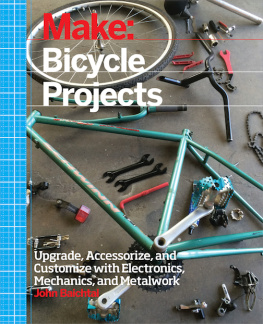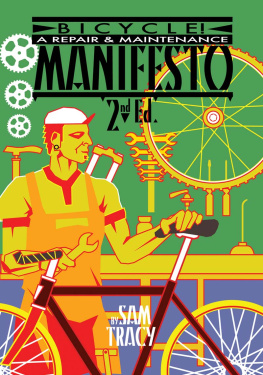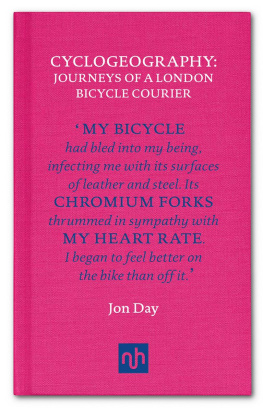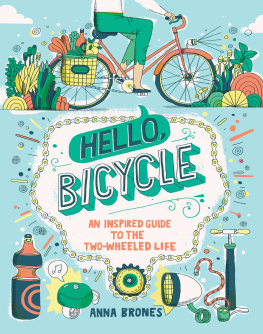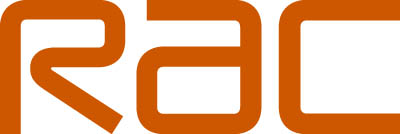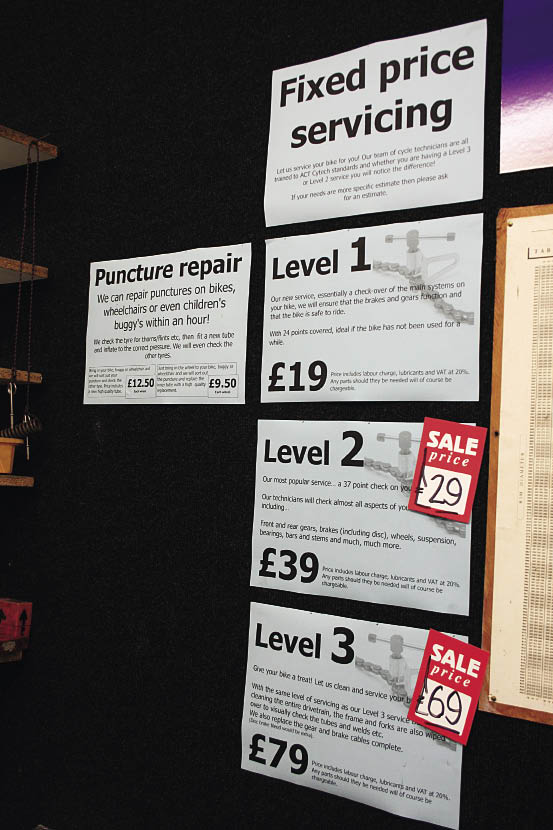Caring for your bicycle
Your expert guide to keeping your bicycle in tip-top condition
Peter Henshaw
This publication has been produced on behalf of RAC by Veloce Publishing Ltd. The views and the opinions expressed by the author are entirely his own, and do not necessarily reflect those of RAC. New automotive technology is constantly emerging; the information in this book reflects the status quo at the date of publication.
First printed in paperback format in June 2012.
First published in ebook format September 2012 by Veloce Publishing Limited, Veloce House, Parkway Farm Business Park, Middle Farm Way, Poundbury, Dorchester, Dorset, DT1 3AR, England Fax 01305 250479 e-mail .
Ebook edition ISBN: 978-1-845845-42-1
Paperback edition ISBN: 978-1-845844-77-6
Peter Henshaw and Veloce Publishing 2013. All rights reserved. With the exception of quoting brief passages for the purpose of review, no part of this publication may be recorded, reproduced or transmitted by any means, including photocopying, without the written permission of Veloce Publishing Ltd. Throughout this book logos, model names and designations, etc, have been used for the purposes of identification, illustration and decoration. Such names are the property of the trademark holder as this is not an official publication.
Made under licence from RAC Motoring Services. The RAC logo is the registered trade mark of RAC Motoring Services.
Readers with ideas for automotive books, or books on other transport or related hobby subjects, are invited to write to the editorial director of Veloce Publishing at the above address.
All Ebook design and programming by Veloce Publishing Ltd on Apple Mac.
digital.veloce.co.uk
Veloce Publishing Ltd
www.rac.co.uk
Contents
Introduction & acknowledgements
Introduction
Cycling is a life enhancer; good for you, good for the planet, and great fun. And maintaining your bicycle can be part of that experience. Not only will some simple maintenance and repair jobs keep your bike running smoothly and efficiently, but they will give you extra satisfaction. A bike with under-inflated tyres, a dry chain and slipping gears is not a lot of fun, not to mention hard work to ride. Working as it should, its a joy.
Bicycles are simple machines, and just a little attention will keep them trouble-free. But even if you would prefer to leave most of this to a bike shop (or a willing member of the family) there are still a couple of jobs checking brakes and tyre pressures that all cyclists should be able to do. For safetys sake, its worth knowing how to spot a faulty brake or tyre, for example.
Bike dealers will tackle any jobs you dont want to do, usually at reasonable cost.
This book explains how to care for your bicycle, in straightforward language and clear pictures how to clean it, which tools youll need, how to make safety checks, do routine maintenance and a few simple repairs. A maintenance schedule outlines how often jobs need doing, and the troubleshooting table should help to pinpoint the cause of any problems. If you are tackling a job youre unfamiliar with, read through the relevant section first, then get to work, with the book by your side.
Hopefully all of this will enable you to get more out of your bike, and maybe use it more often.
Have a good ride.
Keeping your bike in good shape means youll get more out of it.
Acknowledgements
For their help with pictures for this book, thanks go to James Robinson and Eddy at Dorchester Cycles (www.dorchestercycles.org.uk), A to B magazine (atob.org.uk), Anna Finch and Bonny Sartin.
one
Bike basics
What everything does
Frame
Usually steel or aluminium tubing, its job is to support the riders weight and transfer his/her power through the drivetrain efficiently.
Fork
Needs to absorb road shocks. Telescopic forks on some mountain bikes act as suspension systems.
Pedal
Cheaper pedals are plastic. Clipless metal pedals are more expensive, but transfer power more efficiently.
Chainrings
Two or three of these on a derailleur-geared bike give a wide choice of ratios.
Front mech
Shifts between the chainrings.
Cassette
Cluster of sprockets (from 6 to 9) to give a wide choice of gear ratios.
Rear mech
Shifts between sprockets.
Tyre
Modern tyres deliver a good mix of rolling ability, roadholding and puncture resistance kevlar bands are sometimes fitted to help ward off punctures.
Wheels
Spoked wheels are relatively light and strong they very rarely fail.
Gear shifters
Various types, though thumb shifters and twistgrips are most common. Most are indexed, giving one gearchange per click.
Headset
Two sets of bearings allowing forks and handlebars to swivel in the frame, ie steer.
Bottom bracket
Contains an axle on which the pedals are mounted bottom bracket bearings will need periodic lubrication (unless of the sealed cartridge type), and replacement when worn.
A - Cassette. B - Tyre. C - Frame. D - Gearshifters. E - Headset. F - Wheel. G - Fork. H - Pedal. I - Bottom bracket. J - Front mech. K - Chainrings. L - Rear mech.
two
Tools
To look after your bike properly, you will need a few tools, even if you are only contemplating the more simple jobs. Some of these such as spanners, allen keys or pliers you may already own, but there are also some specialist tools you may need to buy. The good news is that these arent expensive, and good quality tools, if looked after, will last for years. Your local bike shop should have everything in stock.
The most basic essential item is a pump. The cheapest type clamps onto the frame, but a track pump is worth having at home, as its far quicker to use and usually comes with a pressure gauge. Puncture repair kits are cheap, and your basic set of tools should also include a set of allen keys (a small multi-set is easier to carry on the bike), spanners and screwdrivers. A spoke key is also a handy tool to have around having one makes it very simple to tighten a loose spoke.
You dont need to take all of this with you on every ride carrying unecessary weight is too much like hard work, and tools are rarely needed out on the road. Take the pump, puncture repair kit, a spare inner tube and allen keys, as get-you-home items.
For more involved maintenance jobs, a chain tool is needed to split the chain if it doesnt have a split-link, and for any work on the chainrings or bottom bracket, you will need a crank puller. A cartridge bottom bracket will need a bracket remover, hollow-axle cup tool, and a large slim spanner. To replace inner cables, cable cutters will snip off the cable end neatly.


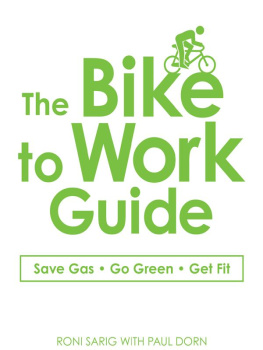
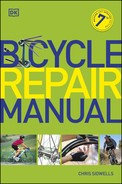

![Shanks - Essential bicycle maintenance & repair: [step-by-step instructions to maintain and repair your road bike]](/uploads/posts/book/235248/thumbs/shanks-essential-bicycle-maintenance-repair.jpg)
